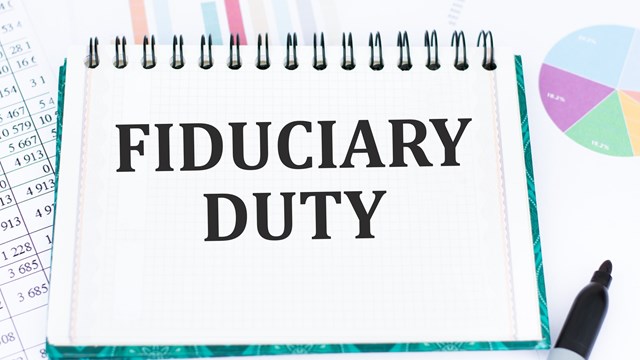
Annual shareholders’ meetings are in our midst. It takes a lot for a board to prepare for the spring occasion, but if thoughtfully planned by a building’s board and managing agent, it can become a successful forum for board elections, the dissemination of news concerning the building, and for shareholders to air their concerns. According to Steven Wagner, a partner at the Manhattan law firm Wagner, Davis & Gold, everything a board needs to know about running an annual meeting is stated in the building’s bylaws. Wagner explains, "The annual shareholder’s meeting is run according to a recipe, found in the larger cookbook of building bylaws. To learn how to run a shareholder’s annual meeting, just follow the recipe."
What’s on the Agenda?
Mandated by the Business Corporation Law (BCL), annual meetings generally follow the same format. Each usually begins with the chairman of the board addressing the shareholders and introducing the board members. Roll is then taken and proxies (powers of attorney a shareholder gives to the board or an individual to vote his or her shares at the meeting) are presented and examined. The next order of business is usually a reading of the minutes of last year’s annual meeting. The president then gives the "State of the Co-op Address" which details the financial status of the co-op at the present time, as well as other accomplishments of that year. The Treasurer’s report usually follows, specifically outlining the financial health of the co-op including its profit or loss over the year. Immediately following, it is customary for building professionals and/or committees (i.e., managing agent, attorney, gardening committee, etc...) to give individual reports. After all the statements have been given, elections of board members are usually conducted by the chairman or the corporate counsel.
In addition to board member elections, the building bylaws may be amended, altered, repealed, or added during any annual meeting. This usually requires a vote of two-thirds of shareholders, in person or by proxy, provided that the proposed amendment was included in the annual notice sent prior to the meeting, or that all of the shareholders are present or represented by proxy.
Time to Vote
Elections begin with the nomination of the candidates and their individual speeches. Ballots should be drawn up (if the voting is to be done by written ballot) and ready to be given to the shareholders when they sign in at the meeting. Ballots should also be structured as stated in the building’s bylaws. For example, according to Wagner, the bylaws of West End Avenue Owners Corp. require that the ballot include the name of each shareholder, the number of shares they own, their apartment number, and the name of their proxy, if they chose to have one.
Proxies may be used for both quorum and voting purposes. Wagner explains, "Proxies can be general or specific and give the shareholders an opportunity to enfranchise." He continues, "A general proxy permits a shareholder to appoint anyone to represent him or her. The substitute individual then has the right to vote for whoever he or she chooses during the meeting. A limited proxy, however, does not provide that freedom to the substitute. The shareholder has the option of choosing who he or she wants the proxy to vote for."
Each building’s bylaws state which voting method is used, straight or cumulative voting. One vote counts for each share owned in straight voting. Cumulative voting entitles each shareholder to as many votes that equals the amount of shares owned, multiplied by the number of directors to be elected. According to Wagner, many boards do not require written ballot, in which case voting is done "viva voce" (verbally). However, any shareholder or proxies present at the meeting can demand a vote by written ballot, in which case ballots are immediately drawn up.
Preparing for the Meeting
The most important aspect to planning the annual meeting is informing building residents. Prior to the meeting, a notice must be sent out to shareholders which states the place, date and hour of the annual meeting, as well as the agenda, election of directors, any proposed changes, and a detailed explanation outlining these changes. Donald H. Levy, director of Lawrence Properties, a property management firm in Manhattan, says that sending the notice "must comply with the minimum/maximum time period stated in the bylaws." The bylaws of the Moreigh Apartment Owners Corp. state that the annual notice must be in writing and signed by the president, vice president, secretary, or assistant secretary, and must be mailed or delivered personally to each shareholder no less than ten or more than 40 days before the meeting. Levy says that some bylaws require the notice to be sent by certified mail.
Even if there are no corporate documents to amend, New York law requires that a quorum (a certain percentage of shareholders) be present for a meeting to take place. According to Wagner, in most cases 50 percent of all shareholders need to be present to hold the meeting and two-thirds are needed to effectuate amendments.
If a quorum is not present, whether in person or by proxy, Levy, says that the board has two choices: "The board president can hold an informal meeting or if there are critical issues such as flip taxes or contested elections, the meeting can be adjourned. Another meeting can be held at a later date but only the existing proxies count at the second meeting."
It is also a good idea to include the preceding year’s financial statements and the current budget with the notice. Ric Montanye, a partner with Marin & Montanye, an accounting firm in Roslyn New York, says that although a statement given once a year prior to the meeting is adequate, "it is important that shareholders are aware of what is going on in their building, so they are not surprised and suspicious at the meeting." That’s useful to note because, according to Levy, "it’s important to avoid having the meeting turn into a complaint session.
Time to Talk
Levy says problems that can arise include "the airing of personal gripes, people not sticking to the topics, and hostile attempts to get people on the board. Some boards anticipate a contested election and hire an outside company to count votes, send the notice and handle the election." What about having other professionals present at the meeting? Even though the co-op may not be experiencing litigation issues, financial distress, or going under new construction, Allen Turek, an attorney at the Manhattan law firm Hartman & Craven, states, "An attorney should be present at the annual meeting, not merely to deal with litigation issues, but as a reference for shareholders. Sometimes you find that a shareholder who has kept quiet about an issue throughout the year, will use the meeting as a forum to express their particular gripe or concern." Turek adds, "You never know what someone will come out with at a meeting."
In addition, Richard Smolin, a partner with Smolin and Yavel, an accounting firm in Brooklyn, expresses, "It is important that an accountant be present at the annual meeting not only to give board members and shareholders a thorough review of the corporation, and explain changes such as maintenance increases or reserve fund expenditures, but additionally to be available to shareholders and boards as a resource to answer any questions they may have." Many shareholders will attend the meeting knowing they’ll receive professional feedback. Levy adds, "It’s also the board’s decision to have an architect or engineer present if the building is in the midst of a capital project."
After the voting period, there is usually a question and answer period (during which the votes are sometimes tabulated). This is an open floor for shareholders to pose questions to their board, meet new residents of the building, and air their pleasure or discuss matters that dissatisfy them. It is a time for shareholders to express which operations in the past year they agree or disagree with, as well as voice new ideas they have to make their building run more smoothly.
After a sufficient question and answer period, the chairman then asks for a motion to adjourn and the annual meeting comes to a close for another year. It is very common practice for the board of directors to meet immediately afterwards to introduce the new elected members and to elect their officers. It’s just the beginning in another year of building activities –the culmination of which will take place at next year’s ritual occasion.
Ms. Lewis is editorial assistant of The Cooperator.






Comments
Leave a Comment